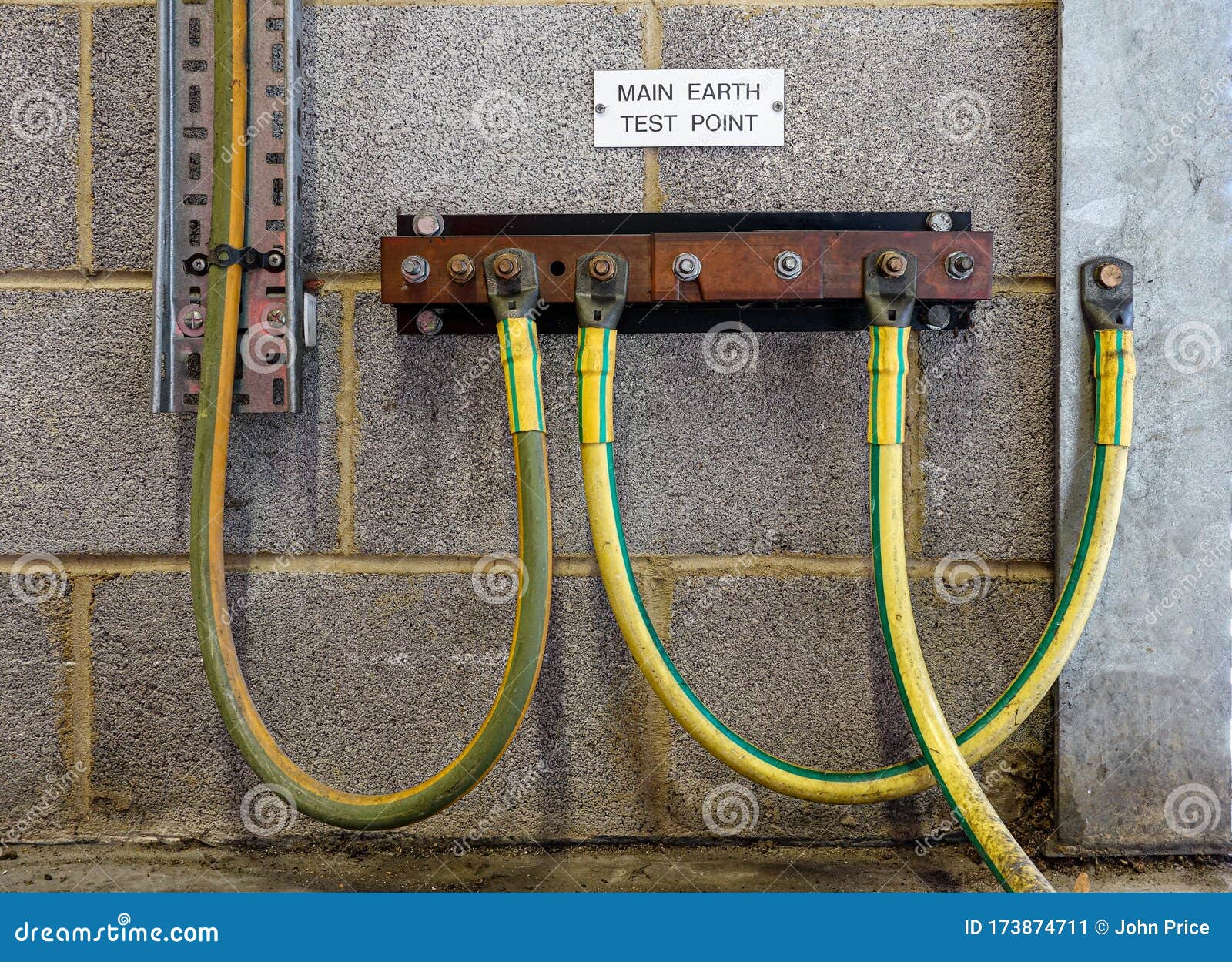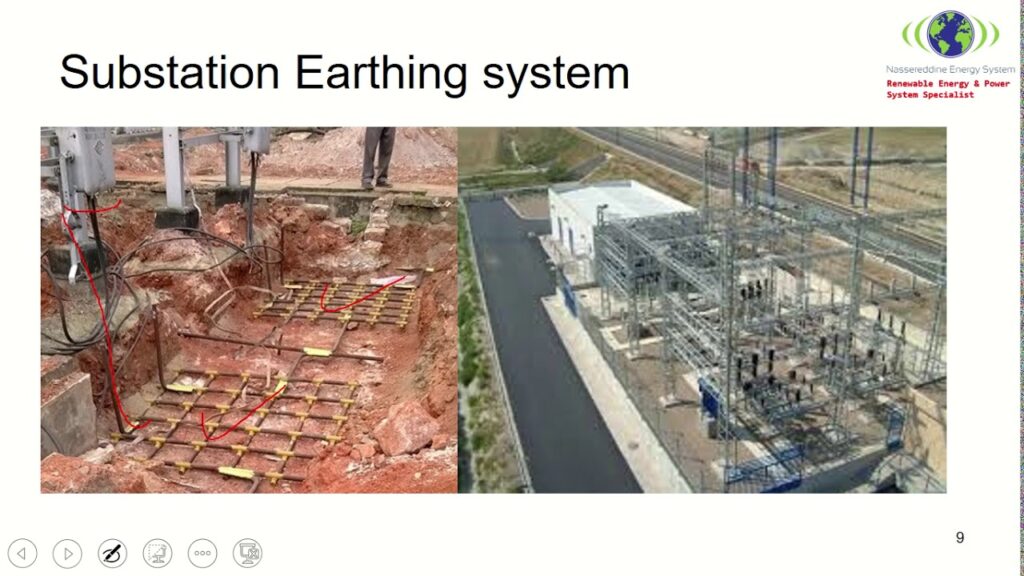The earth’s resistance affects the substation in many ways. The primary way is that it provides a path for current to flow from the grounding system back to the transformer or other equipment. If the earth’s resistance is too high, this can cause problems with the operation of the equipment.
Additionally, the earth’s resistance can affect how well the substation is able to withstand faults and other conditions.
Substation earth resistance is one of the most important parameters for the design and safety of electrical substations. The value of earth resistance varies depending on many factors, including soil type, moisture content, compaction, and vegetation. In general, sandy soils have lower resistivity than clay soils.
Moisture increases conductivity, while compaction and vegetation decrease it.
The resistance of the earth around a substation must be known to properly design the grounding system. The grounding system provides a low impedance path to ground to protect people and equipment from dangerous voltage in the event of a fault.
If the earth around the substation has high resistance, then more current will flow through the grounding system during a fault and there is greater risk of injury or damage.
There are several methods that can be used to measure earth resistance. The most common method is Wenner four-point testing.
This method uses four electrodes placed in a straight line at equal spacing. Two current electrodes are placed at each end of the line, and two potential electrodes are placed in between them at equal spacing. A small alternating current is passed through the two outer electrodes, and voltages are measured between pairs of inner electrodes.
From these voltages, the apparent resistivity (RA) can be calculated using this equation:
RA = 2πab/V where:
a = distance between potential electrodes (m)
b = distance between current electrodes (m)
Substation Earth Grid Resistance Calculation as per IEEE-80 Standards
Earth Resistance Value for 132Kv Substation
What is Earth Resistance Value?
The earth resistance value is the measure of a material’s resistance to the flow of electric current. It is also known as the resistivity or specific resistivity.
The unit of measurement for earth resistance is the ohm-meter (Ω⋅m).
Why is Earth Resistance Important?
Earth resistance values are important because they help determine how easily electricity can travel through soils and rocks.
This information helps engineers design safe and efficient electrical systems, and it can also be used to predict where faults might occur in existing systems.
How is Earth Resistance Measured?
There are several ways to measure earth resistance, but the most common method is by using a four-pin probe.
This type of probe consists of two active pins (A and B) and two ground pins (C and D). To measure the earth resistance, a current is passed through pins A and B while the voltage between pins C and D is measured.
What Factors Affect Earth Resistance Values?
There are many factors that can affect earth resistance values, including:
• Soil type – different soils have different resistivities; for example, sand has a lower resistivity than clay
• Moisture content – wetter soils have higher conductivity than dryer soils
• Temperature – warmer temperatures generally lead to higher conductivity
• Salinity – saltier soils tend to be more conductive than non-salty soils
Knowing the earth resistance value of a particular location can help engineers design safer and more efficient electrical systems.
It can also be used to predict where faults might occur in existing systems.
Earth Resistance Value for Generating Station
An earth resistance value is a number that indicates how well the ground conducts electricity. The lower the number, the better the conductor. Earth resistance values are important for generating stations because they help determine how much electricity can flow through the ground and into buildings or other structures.
The earth’s surface has a natural resistivity to electrical current due to its composition. Soil types, moisture content, and the presence of minerals can all affect resistivity. For example, damp sand has a low resistivity while dry sand has a high resistivity.
Rocks and clay have intermediate resistivities. The depth of the water table can also affect resistivity; shallow groundwater generally increases resistivity while deep groundwater decreases it.
Earth resistance values are measured with an instrument called a soil Resistometer or Wenner four-probe array.
This instrument sends an electrical current through two electrodes placed in the ground at a fixed distance apart; the voltage between these electrodes is then measured with two other electrodes placed further away from each other. The soil’sresistivity is calculated from this voltage measurement using Ohm’s law (V=IR).
Earth Resistance Values for Houses
There are a few different types of houses when it comes to earthing and their respective earth resistance values. The first type is the brick veneer house, which typically has an earth resistance value between 2-4 ohms. The second type is the timber frame house, which typically has an earth resistance value between 4-6 ohms.
The third and final type of common house is the concrete block house, which has an earth resistance value of 8-10 ohms. All of these values are relatively low and indicate that each type of house provides a good connection to the ground.
Earth Resistance Value for Large Substation
The Earth Resistance Value (ERV) of a large substation is an important factor to consider when designing the electrical system. The ERV is the measure of how well the earth can conduct electricity and is affected by many factors including the type of soil, moisture content, and temperature. The ERV for a large substation can range from 10 ohms to over 100 ohms.
It is important to have a low ERV in order to avoid problems with electrical equipment and components. There are several methods that can be used to improve the ERV such as installing electrodes or adding chemicals to the soil.
Earthing of Substation Pdf
Substations are an essential part of the electricity grid. They help to keep the power flowing by providing a connection between different parts of the grid. Without substations, the electricity would have to travel long distances through high-voltage transmission lines, which would be very inefficient.
Earthing is a vital part of any substation. It helps to protect people and equipment from electrical shocks and also provides a path for excess current to flow safely into the ground. Earthing systems can be either direct or indirect.
Direct earthing means that there is a physical connection between the substation and the earth, while indirect earthing uses conductive materials to create a connection.
The choice of earthing system will depend on several factors, including the voltage of the substation, the type of soil in the area, and any nearby buildings or structures. There are many different ways to achieve effective earthing, so it’s important to consult with an expert before designing or installing a system.
Earth Resistance Value of 11Kv Substation
An 11Kv substation is a type of electrical substation that is used to convert high-voltage electricity into lower voltages. The 11Kv substation is typically used in industrial and commercial settings, as well as in power plants. The 11Kv substation consists of a number of components, including transformers, circuit breakers, and switchgear.
The purpose of the 11Kv substation is to provide a safe and reliable means of converting high-voltage electricity into lower voltages.
Value of Earth Resistance for Ht Line
The value of earth resistance for ht line is a very important factor to consider when designing or constructing a new high tension electrical transmission line. This is because the earth resistance value will determine how much current can flow through the ground and into the earth, which can then be used to help dissipate any surplus charge that may accumulate on the line. The lower the earth resistance value, the more efficient the dissipation of surplus charge will be.

Credit: www.dreamstime.com
What is an Acceptable Earth Resistance Value for a Substation?
There is no definitive answer to this question as it depends on a number of factors, including the specific substation design and operating conditions. Generally speaking, an earth resistance value of around 10 ohms is considered acceptable for most substations. This value can be higher or lower in some cases, depending on the particular needs of the substation.
How is Earth Resistance of a Substation Measured?
There are a few ways to measure the earth resistance of a substation. The most common method is to use an earth electrode, which is placed into the ground at the substation site. This electrode measures the resistivity of the soil and provides a good estimate of the earth resistance of the substation.
Another way to measure earth resistance is by using a Wenner array. This method uses four electrodes placed in a linear fashion in order to determine the apparent resistivity of the soil. This method is less common, but can be useful in certain situations where an accurate measurement is needed.
What Should Be the Earth Resistance at Power Station And Substation?
The earth resistance at a power station or substation should be as low as possible to reduce the risk of electrical shocks. The ideal earth resistance is zero, but in practice, it is usually between 1 and 10 ohms.
What is the Earth Resistance Value for 33Kv Substation?
An earth resistance value is a measure of how well a material can conduct electricity. The lower the resistivity, the better the conductor. In general, metals are good conductors, while non-metals are poor conductors.
The earth’s crust is made up of many different materials, so its resistivity varies widely depending on location.
The earth resistance value for 33KV substation will depend on the specific location of the substation. In general, however, the resistivity of the earth’s crust ranges from 10 to 100 ohm-meters.
This means that a 33KV substation would have an earth resistance value somewhere in this range.
Conclusion
The blog post discusses the earth resistance of a substation. The author begins by discussing how the earth resistance of a substation is measured and what factors affect the measurement. The author then goes on to discuss the importance of earth resistance in a substation and how it can be used to improve the safety of a substation.



